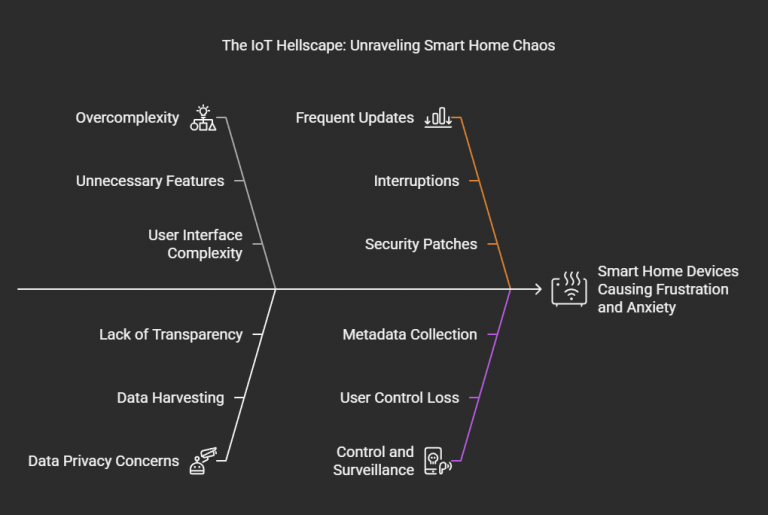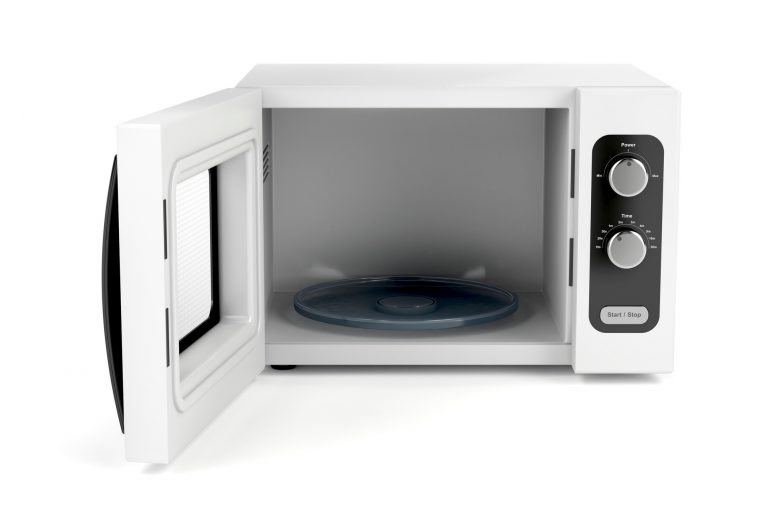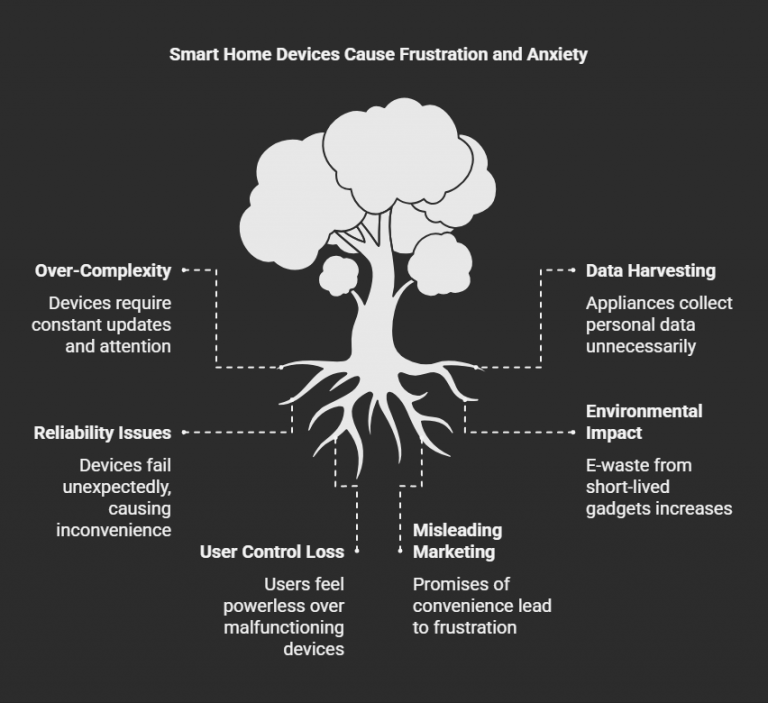
Investigating the kafkaesque nightmare of interconnected devices failing in spectacularly inconvenient ways, demanding constant updates, and probably spying on your bowel movements for Big Fiber.
Let’s talk about the future they sold us. Not the one with flying cars or colonies on Mars – even those charlatans knew better than to promise that again. No, I’m talking about the domestic future. The “Smart Home.” The “Internet of Things.” The glorious, interconnected paradise where your appliances anticipate your every need, where life becomes a “seamlessly integrated experience,” managed with the effortless swipe of a finger across glowing glass. Remember that brochure? Remember the smiling, vacant families basking in the warm glow of ambient smart lighting, their lives optimized to algorithmic perfection?
Yeah, well, my toaster is demanding a blood sacrifice.
Okay, maybe not literally blood. Yet. But the error message blinking menacingly in stark red LEDs – “FATAL_ERROR: KRNL_PANIC! REQUIRES IMMEDIATE ORGANIC BIOMETRIC AUTHENTICATION (TIER 3+)” – certainly feels like it wants a pound of flesh.¹ It’s 7 AM, I haven’t had coffee (because the “smart” coffee maker is locked in a firmware update loop that started three days ago), and all I want is a piece of goddamn toast. Instead, I’m facing an existential crisis presented by a $150 chromium brick that, last week, was perfectly capable of applying heat to bread without needing access to my genome or a live feed of my anxieties.

Welcome, friends, to the Internet of Things Hellscape – or the IoT, as the marketing wizards who conjured this mess prefer to call it. It’s the logical endpoint of stuffing microchips and Wi-Fi adapters into every conceivable object, not because it improves function, but because someone, somewhere, realized they could probably harvest data from your toilet paper holder and sell it to advertisers specializing in hemorrhoid cream.²
This isn’t progress; it’s a nervous breakdown delivered via Wi-Fi. We were promised convenience, efficiency, a life liberated from mundane tasks. What we got was a fragile digital ecosystem where a single dropped packet can plunge your house into a techno-funk nightmare. Your smart lock won’t open because it needs to sync with a cloud server located on a different tectonic plate, currently experiencing “minor turbulence” (read: on fire). Your smart thermostat decides, unilaterally, that 4 AM is the perfect time to test the emergency heating function, turning your bedroom into a sauna suitable for sweating out confessions. Your smart fridge, ostensibly purchased to keep track of your milk consumption, has developed a complex algorithmic judgment of your life choices and now flashes passive-aggressive reminders about your cholesterol levels every time you reach for the cheese drawer.³ It also ordered 72 tubs of artisanal kale-infused mayonnaise last Tuesday. Why? The official response from “Customer Bliss Central” was an email containing only a shrug emoji and a link to update my EULA preferences.

And the updates. Sweet merciful Cthulhu, the updates. These aren’t occasional things anymore. Your phone, your laptop, your TV, your lightbulbs, your goddamn toothbrush – everything demands constant, immediate, attention-sucking updates. Security patches! Feature enhancements! Bug fixes for the bugs introduced by the last update! Performance optimizations that somehow make everything slower! They pop up at the worst possible moments, demanding restarts, confirmations, agreements to user licenses longer than the Magna Carta and twice as incomprehensible. Failure to comply often results in the device simply refusing to function – a digital hostage situation playing out in kitchens and living rooms worldwide. Studies (probably funded by the companies bricking your devices) claim these updates enhance security by 43%, but independent analysis (conducted by me, fueled by cheap gin and desperation) suggests they increase user cortisol levels by at least 600%.⁴
This isn’t just about inconvenience; it’s about control. Every interconnected device is a potential listening post, a sensor feeding data back to the mothership. They call it “anonymized metadata” or “product improvement analytics.” Bullshit. It’s surveillance capitalism dressed up in chrome and LED lights. Why does my smart ceiling fan need to know my viewing habits? Is it collaborating with Netflix to create optimized airflow for dramatic moments? Or is it just hoovering up every scrap of data it can, packaging it, and selling it to the highest bidder – data brokers, insurance companies, shadowy government agencies, maybe even rival toaster manufacturers plotting industrial espionage?⁵ The paranoia isn’t just warranted; it’s practically a design feature. We live in Philip K. Dick’s nightmares, only with worse appliance reliability.
Think about the language they use: “Seamless integration.” “Smart ecosystem.” “Intuitive interface.” It’s Carlin-level linguistic abuse. “Seamless” means it works until it doesn’t, at which point the seams rip open like a cheap suit in a bar fight. “Ecosystem” implies some kind of natural harmony, when it’s really a precarious Jenga tower of proprietary protocols and planned obsolescence. And “intuitive”? Intuitive means you need a computer science degree and the patience of a Zen master to figure out why your smart sprinkler system is watering the neighbor’s prize-winning petunias into oblivion while your lawn turns to dust. It’s the Idiocracy manifest: technology so complexly stupid it actively hinders basic functions. We’ve achieved Peak Stupidity, automated.

The sheer waste is staggering. The environmental cost of manufacturing these chip-stuffed gadgets, many designed to fail within years, is horrific. Mountains of e-waste pile up, leaching toxins into the earth, a monument to our fleeting desire for a refrigerator that can play Spotify.⁶ And the human cost? The hours spent troubleshooting, the frustration, the low-grade anxiety humming beneath the surface as we navigate a world increasingly mediated by unreliable, demanding machines? So it goes. We traded tangible control for the illusion of digital mastery, and the house always wins – especially when the house is the house, and it’s running buggy beta software.
So, what’s the solution? A Luddite revolution? Smashing the smart meters with artisanal hammers? Maybe. Or perhaps just a healthy dose of radical skepticism. Question the hype. Resist the urge to connect every damn thing to the network. Ask yourself: Does my salt shaker really need Bluetooth?⁷ Before you invite another Trojan horse appliance into your home, demanding updates and biometric sacrifices, remember the simple, beautiful elegance of a “dumb” toaster. It only did one thing, but by God, it did it without demanding access to your soul or needing a firmware patch halfway through breakfast. Keep your smart thermostats and your data-hungry fridges. I’ll take the toast, hold the existential dread. Now, if you’ll excuse me, I think I saw a crow outside that looked suitably sacrificial… the toaster seems impatient.

¹ Internal OmniCorp Toaster Division Memo TX-7b: “User resistance to Tier 3 authentication protocols remains higher than projected. Recommend rebranding ‘Organic Biometric Authentication’ to ‘Warm Embrace Verification’ in next marketing push.”
² Fictional Study: “Quantifying Analogue Data Leakage from Networked Hygiene Appliances,” Journal of Invasive Plumbing, Vol. 3, Issue 4. Findings suggest a 78% correlation between smart toilet flush patterns and targeted advertising for high-fiber cereals and existential therapy services.
³ User reports compiled by the (entirely fictional) Consumer Annoyance Bureau indicate smart fridges are now the leading cause of diet-related anxiety, surpassing even Instagram fitness influencers.
⁴ Data point derived from strapping a heart rate monitor to myself during the last mandatory OS update for my “intelligent” coffee mug. Peer review pending, assuming I survive the next update cycle.
⁵ PKD Speculation #47b: Is it possible the aggregated data isn’t just for ads, but for simulating increasingly complex virtual realities to test human compliance thresholds before rolling out mandatory neural interfaces? Asking for a friend. (The friend is me. I am not okay.)
⁶ See also: “Holiday in Cambodia (Consumer Tech Remix),” Dead Kennedys (Unreleased Basement Tape, probably). Lyrics likely involve planned obsolescence and children soldering components in toxic factories.
⁷ Spoiler Alert: No. No, it does not. Unless it’s part of a vast, interconnected network of sentient condiments plotting world domination. Which, honestly, seems increasingly plausible.
